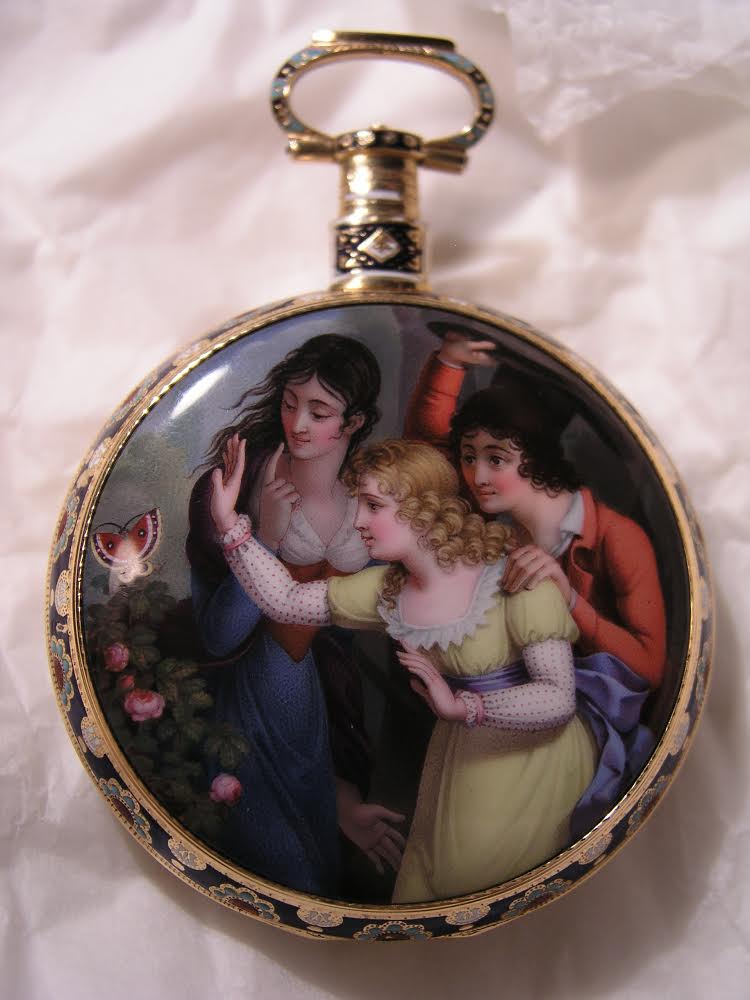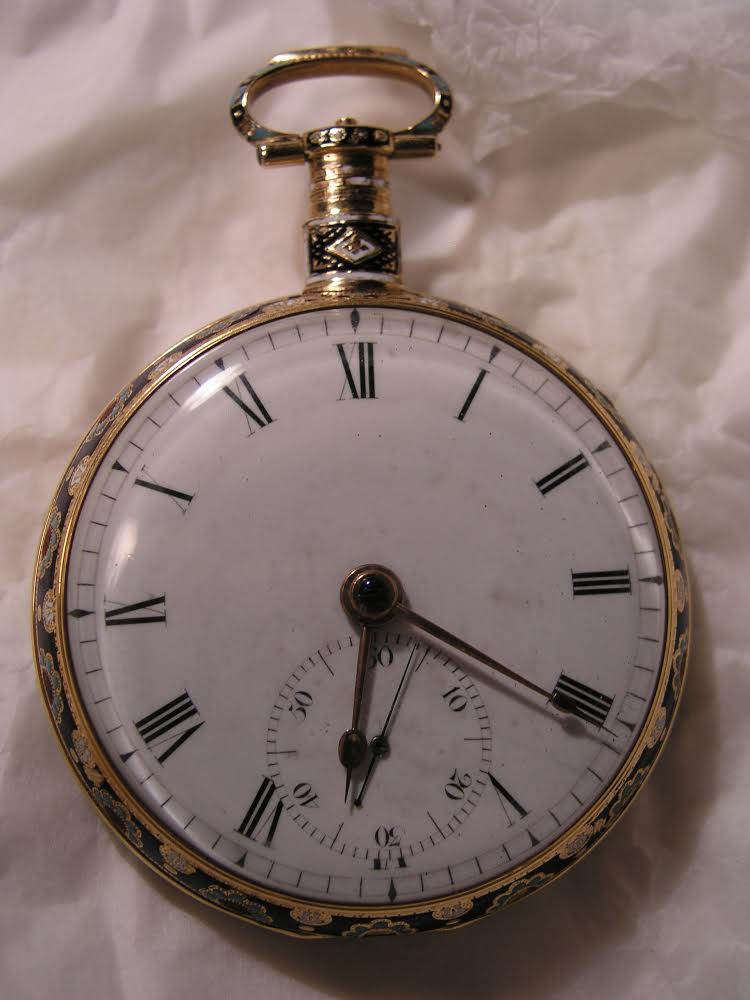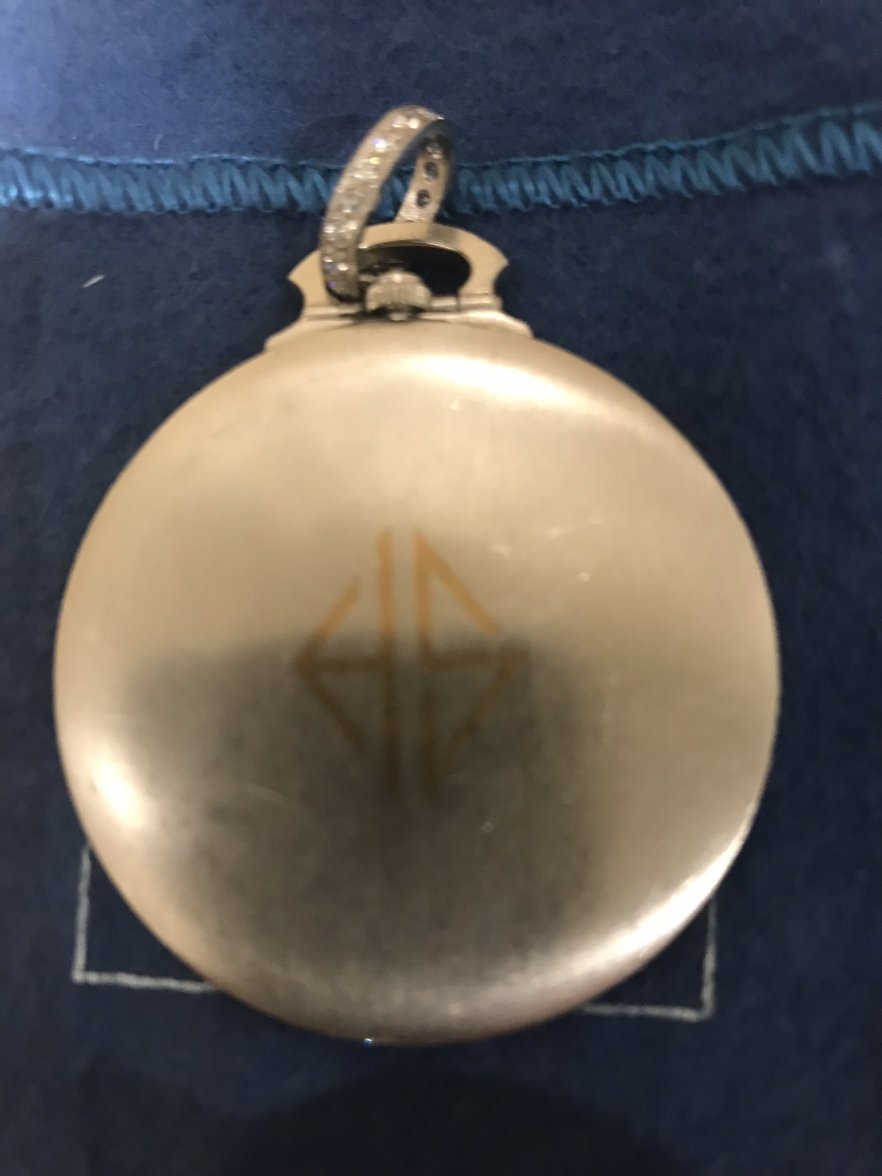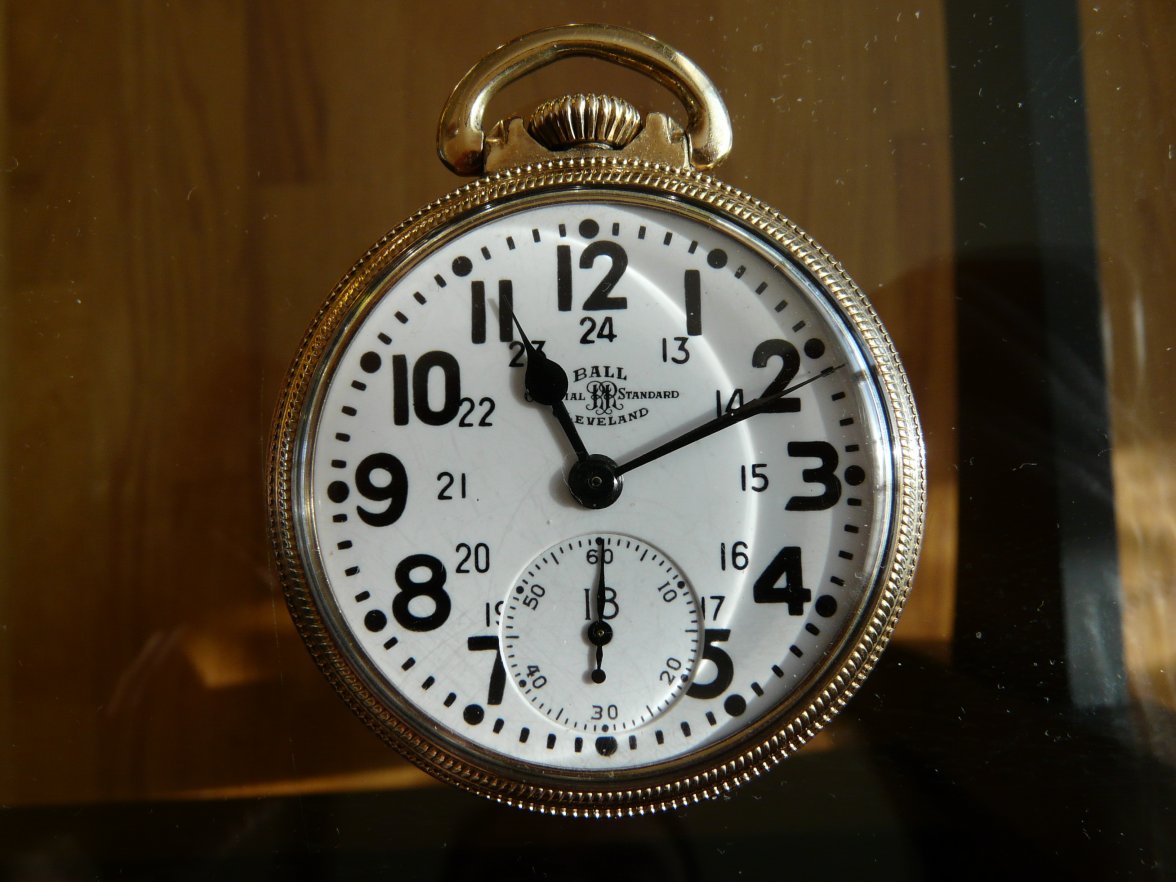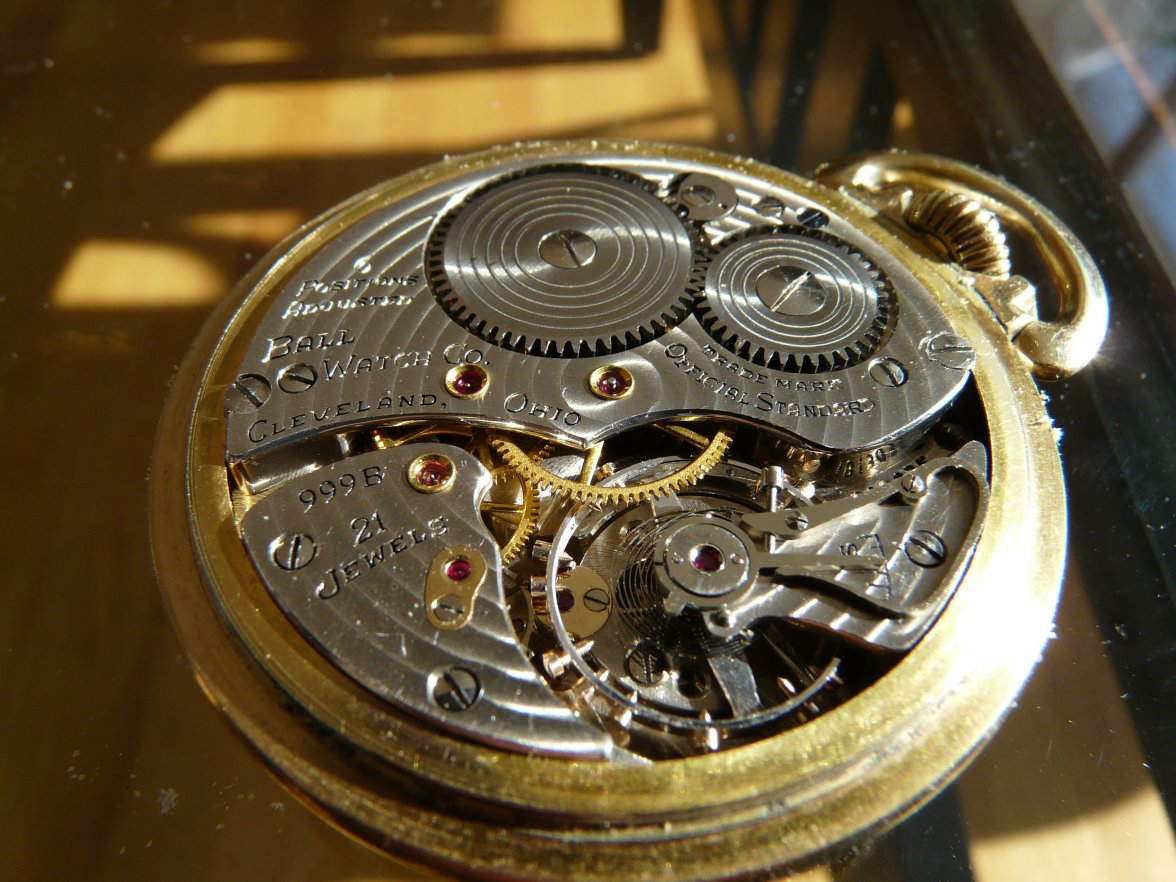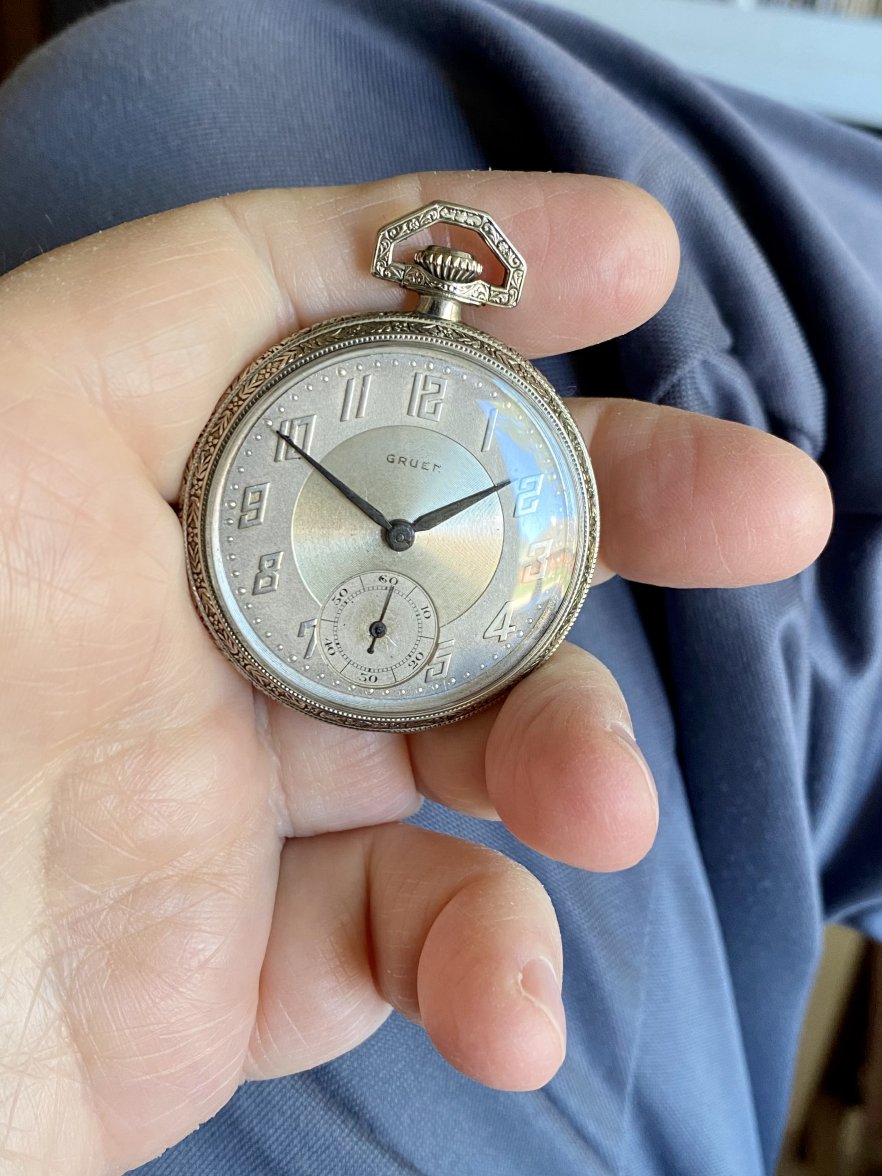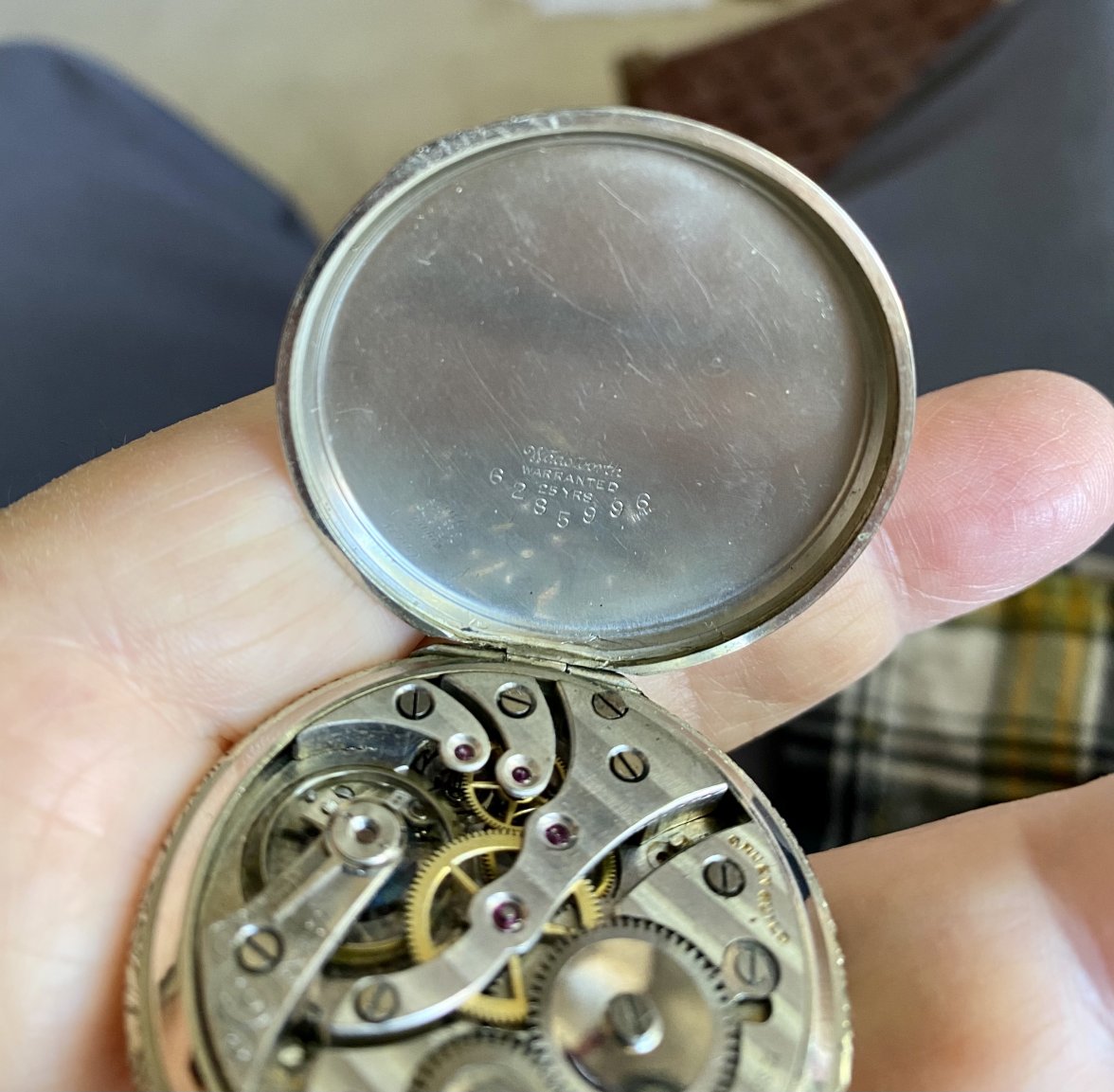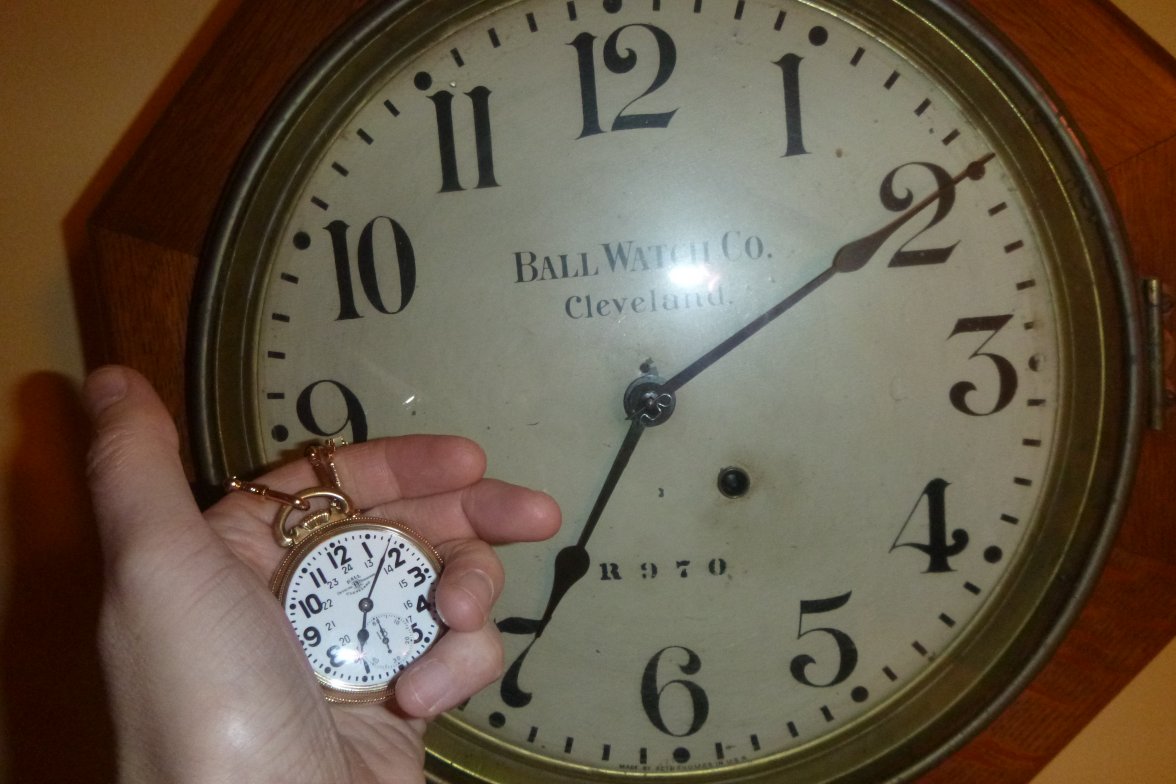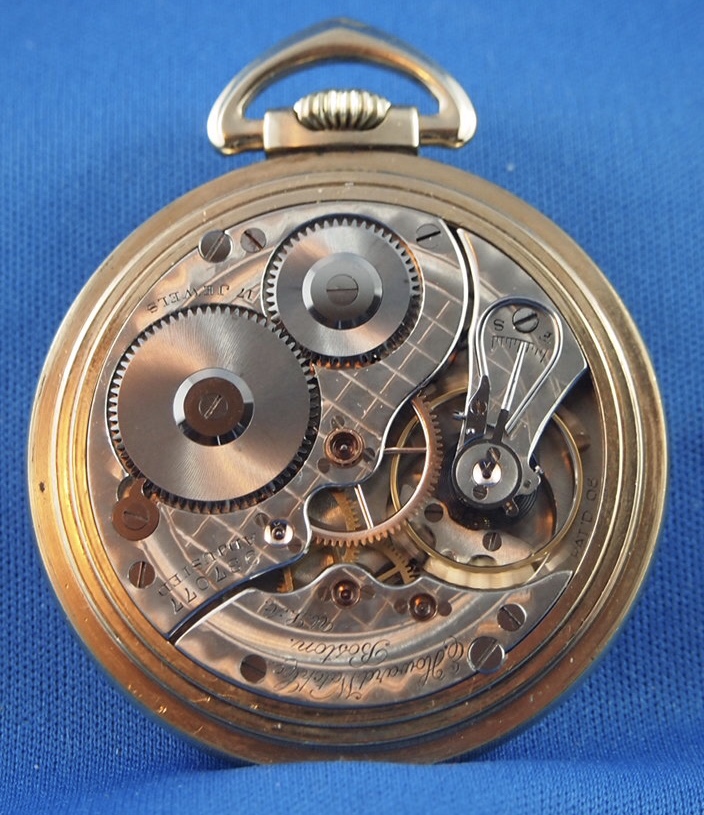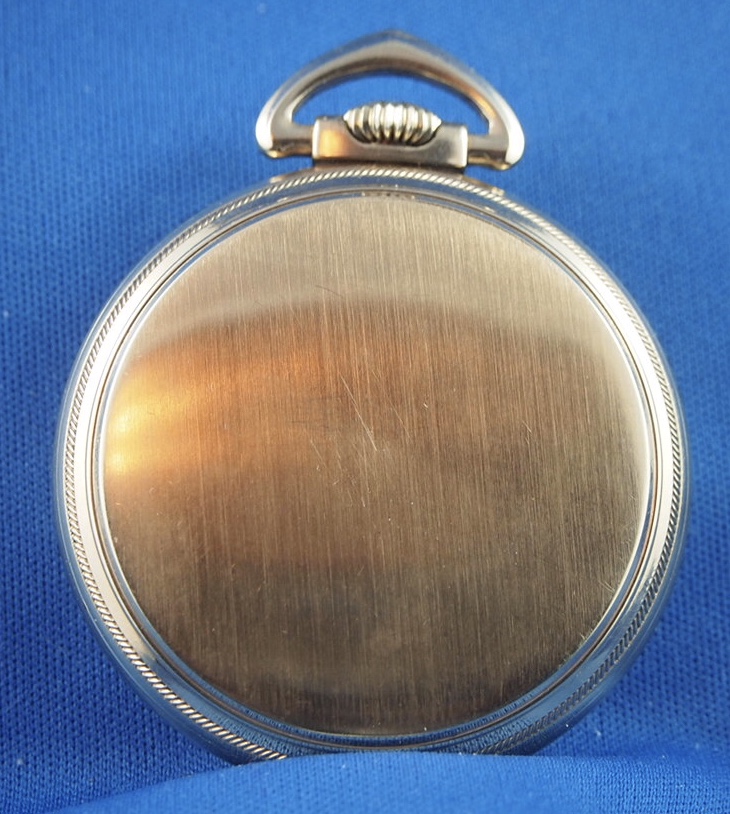Calling all Pocket Watch Buffs
Canuck
·Another goodie from the Usher Gallery in Lincoln, in England. The Wikipedia article, and other online sites that feature the Ushers, are indefinite as to whether James Ward Usher, or his father, James Usher, was the person whose collection is housed in the Usher Gallery. The father founded a jewellery business in Lincoln, in 1837. James Ward Usher joined his father in the business. The collection might have been assembled by them both. The watches I have shown in this thread are now approximately 350 to 375 years old. But the collection of these watches appears to have started in the mid-19th century, when such items were probably more readily available than they are today.
The subject work of art (more so a work of art, than a watch) is probably French, and I would estimate it to have been made in the late 18th or early 19th century. The watch is typical of that era. Likely a verge escapement with a fusee, key wound, and key set. What is more obvious about it is the vitreous enamel work on the case!
The scene on the case may comprise about 10 or 12 different colours of enamel. Each separate colour of enamel would have been applied by hand with very fine brushes. Some brushes as fine as a single strand of sable hair. After each application of colour, the item would require a separate firing in a kiln to fuse the enamel, with temperatures up to about 1,200° F for up to one hour. In that era, kilns were fired by coke, and the amount of spoilage was high owing to fly ash, and spoilage resulting from repeated firings. The enamels that were used were in the form of finely powdered, coloured glass. The powdered enamel in no way resembled the colour of the enamel after firing. It was fusing of the glass particles as they liquified from the high heat of the kiln, that brought out the colour.
This watch is somewhat newer than an earlier one that I posted, as evidenced by the presence of a minute hand and a seconds hand. That would seem to indicate that the watch mechanism had advanced to the point that it was accurate enough, that the owner could now rely on the watch to be only minutes out in a day, rather than hours! The pushpiece on top of the pendant likely opens the back cover of the case to permit winding and setting.
Had I known, all those years ago, that I would be showing these watches in a forum such as this, it would have been prudent of me at the time, to record more information about these splendid items.
The subject work of art (more so a work of art, than a watch) is probably French, and I would estimate it to have been made in the late 18th or early 19th century. The watch is typical of that era. Likely a verge escapement with a fusee, key wound, and key set. What is more obvious about it is the vitreous enamel work on the case!
The scene on the case may comprise about 10 or 12 different colours of enamel. Each separate colour of enamel would have been applied by hand with very fine brushes. Some brushes as fine as a single strand of sable hair. After each application of colour, the item would require a separate firing in a kiln to fuse the enamel, with temperatures up to about 1,200° F for up to one hour. In that era, kilns were fired by coke, and the amount of spoilage was high owing to fly ash, and spoilage resulting from repeated firings. The enamels that were used were in the form of finely powdered, coloured glass. The powdered enamel in no way resembled the colour of the enamel after firing. It was fusing of the glass particles as they liquified from the high heat of the kiln, that brought out the colour.
This watch is somewhat newer than an earlier one that I posted, as evidenced by the presence of a minute hand and a seconds hand. That would seem to indicate that the watch mechanism had advanced to the point that it was accurate enough, that the owner could now rely on the watch to be only minutes out in a day, rather than hours! The pushpiece on top of the pendant likely opens the back cover of the case to permit winding and setting.
Had I known, all those years ago, that I would be showing these watches in a forum such as this, it would have been prudent of me at the time, to record more information about these splendid items.
- Posts
- 8
- Likes
- 51
tedo
·Canuck
·In 1870, there was no such thing as a universal system of standardized time which was a huge problem in the safe operation of railroads. At this time in the U S A, there were 10 observatories broadcasting time to subscribers. A rail system might subscribe to a particular time source for their own rail system which would broadcast by telegraph, over their system. So regardless of what solar time might be anywhere on that system, crews were to operate on a form of standard time.
The next problem for railroads who followed a form of standard time to have to contend with, was the uneven performance of the watches used by crews on their system. In 1871, the Pennsylvania Railroad issued Elgin American Watch Co. B W Raymond watches to engineers and conductors on its system, in an attempt to enforce standard time. Within one year, most of the watches were either broken, or had been pawned. The program was discontinued.
The pictured Elgin B W Raymond pocket watch is similar to the watches mentioned above.
The next problem for railroads who followed a form of standard time to have to contend with, was the uneven performance of the watches used by crews on their system. In 1871, the Pennsylvania Railroad issued Elgin American Watch Co. B W Raymond watches to engineers and conductors on its system, in an attempt to enforce standard time. Within one year, most of the watches were either broken, or had been pawned. The program was discontinued.
The pictured Elgin B W Raymond pocket watch is similar to the watches mentioned above.
Fritz
·It Ball day, 1948 999B
I was in to my watchmaker's place yesterday, mooching a coffee and discussing life.
Anyway, the dirty bird reaches behind the counter and pulls out two packages, the first is a complete 1893 Elgin B.W.Raymond movement in nice shape but in need of a hunter case and a set of hands, which I happen to have. I'll think on that one.
But the send box... a 1926 Hamilton 992 in really very nice condition with the boldest boxcar dial I've ever seen. Seems another customer wants to be rid of it...
Now, the wait... will the offer be enough???
I was in to my watchmaker's place yesterday, mooching a coffee and discussing life.
Anyway, the dirty bird reaches behind the counter and pulls out two packages, the first is a complete 1893 Elgin B.W.Raymond movement in nice shape but in need of a hunter case and a set of hands, which I happen to have. I'll think on that one.
But the send box... a 1926 Hamilton 992 in really very nice condition with the boldest boxcar dial I've ever seen. Seems another customer wants to be rid of it...
Now, the wait... will the offer be enough???
Canuck
·According to the Shugart, Engle, and Gilbert book, there were three variations of your watch. Variation 1 serial numbers ran from 2B001 to 2B700. All from circa 1943. The rest of production had s# starting with 1, and according to Col. George Townsend in his book American Railroad Watches, the second series (beginning with #1B001, ran to 1B27,500, produced between 1943 and 1954. According to the Shugart book, the third variant ran from 1B 26,900, to 1B 27,600*. *Townsend says the series ended a 27,500. I don’t know who was correct. Townsend doesn’t mention a third variant, and he implies that the third variant was lumped together with the second variant. The third series had straight line damascening, rather than circular. Your handsome 999B (I was going to say handsome BALL😁) is likely from the second variant.
Now, aren’t pocket watches a whole lot more interesting than wrist watches?
Now, aren’t pocket watches a whole lot more interesting than wrist watches?
TexOmega
·Canuck
·Gruen was also one of the two companies that managed to identify and capture a then hitherto unidentified potential market, in the nineteens. Wrist watches for women! Between Gruen and Bulova (both were American companies marketing Swiss products), they caught the U S watchmaking companies, sleeping at the switch! At one time, top of mind in North America, it was American pocket watches. By the right kind of advertising, in the right places, at the right times, and in the right amounts, top of mind in North America became Swiss wrist watches. And we all know where that eventually ended up! I have a few Gruens, myself. But only wrist ones. Nice watch!
Fritz
·According to the Shugart, Engle, and Gilbert book, there were three variations of your watch. Variation 1 serial numbers ran from 2B001 to 2B700. All from circa 1943. The rest of production had s# starting with 1, and according to Col. George Townsend in his book American Railroad Watches, the second series (beginning with #1B001, ran to 1B27,500, produced between 1943 and 1954. According to the Shugart book, the third variant ran from 1B 26,900, to 1B 27,600*. *Townsend says the series ended a 27,500. I don’t know who was correct. Townsend doesn’t mention a third variant, and he implies that the third variant was lumped together with the second variant. The third series had straight line damascening, rather than circular. Your handsome 999B (I was going to say handsome BALL😁) is likely from the second variant.
Now, aren’t pocket watches a whole lot more interesting than wrist watches?
When you see a Ball watch on an American site its usually in a proper Ball case, but to save import duties they were brought into Canada uncased. I read once that Ball had a complete finishing facility in Winnipeg, I think associated with D.R.Dingwall. who was a big time jeweler in that city. My brother has an ex railway Seth Thomas Globe with Dingwall markings.
I managed to nail a nice ex railroad Seth Thomas from 1915 which was sold to the railroad by Ball Cleveland.
Duracuir1
··Never Used A KodakAn interesting video on the Waltham Watch Co.
Also, one on the Illinois Watch Co.
https://youtu.be/vTQT6PwgJTA
Canuck
·Another submission. I bought this one in the mid 1980s. I don’t remember exactly when. But it was some time after I bought my first Keystone Howard series V. This one is a bit of an anomaly, in that I am not certain which series it is! If I go by my Keystone Howard 1919 parts list, it is a series IX. I always though it was a series VII, but there isn’t a Keystone Howard series VII. If I go by the pocketwatchdatasheet.com data, it indicates it is a series IV. But my 1919 parts list doesn’t show a series IV! Very little about this watch matches the pocketwatchdatasheet.com listing for this watch. So here’s what I know about it.
- 16-size
- stem wind, stem set.
- 17-jewels
- single roller
- adjusted (likely, but not marked).
- temperature compensated
- blued steel Breguet hairspring.
- single sunk vitreous enamel dial
- Keystone rolled gold plated case
- railroad grade? No
- railroad approved? No
Every time I look at the movement in this watch, it reminds me of the layout of a Hamilton 992, which it is not. When I took it out of the vault this morning, it was fully wound, but wouldn’t run. Might it be that it was over 30 years ago since it was last cleaned? I conditioned it this morning, and it is now fine.
This watch has had little use since it was made about 110 years ago. The butler finish on the case back has minor marks, but it is as original. Today and for the next few days, I have it on my @DaveK lanyard, and I’ll likely wear it fo a few days.
Antique watches can keep you humble. When I took this one out of the safe, it was wound, but not running. I surmised a cleaning would be the answer. It ran fine for two days, and quit! Did I miss something? It appears as though I did! On this movement, the mainspring barrel fits under the centre wheel, and the third wheel. There was not a lot of space between the top surface of the mainspring barrel, and the under side of the rim of the third wheel. The mainspring barrel has a torsional reaction to the wound up mainspring. There were times when the mainspring barrel was rubbing on the under side of the third wheel. Solution? Tighten the top barrel arbor bearing in the barrel, reducing “wobble” caused by the wound mainspring, and reduce the endshake of the barrel arbor by about 0.03 mm so the barrel sits a bit lower. Nice clearance now, between the rim of the fourth wheel, and the top surface of the mainspring barrel. Step one.......diagnose. Step two.....repair.
Pun
·Canuck
·Any opinion on this, friends? Getting it for $400..
You don’t give enough details for me to come to a hard edged conclusion. But this is a modern watch. The absence of “QUARTZ” on the dial tells me this likely has a mechanical wrist watch movement in it. Parts of the case appear to be die-cast, and the case, electroplated. The surround on the front and back of the case is likely acrylic “enamel”. Sort of cute, but most assuredly, not my cup of tea. Especially at $400!
Pun
·You don’t give enough details for me to come to a hard edged conclusion. But this is a modern watch. The absence of “QUARTZ” on the dial tells me this likely has a mechanical wrist watch movement in it. Parts of the case appear to be die-cast, and the case, electroplated. The surround on the front and back of the case is likely acrylic “enamel”. Sort of cute, but most assuredly, not my cup of tea. Especially at $400!
- Posts
- 8
- Likes
- 51
tedo
·Canuck
·You provide two terrible pictures of a watch, absolutely no information about it, whatsoever, and you think we should be able to give an opinion and an evaluation on it? What material is the case made of? We need pictures of the markings inside the case back, the weight of the case without the mechanism, diameter, and information regarding do you own it, or are you considering buying it, or if yours, are you wanting to sell it? If it’s yours, and you are wanting to sell it, you won’t be able to do it here! And don’t be surprised if any evaluation amounts to only scrap value!
- Posts
- 8
- Likes
- 51
tedo
·You provide two terrible pictures of a watch, absolutely no information about it, whatsoever, and you think we should be able to give an opinion and an evaluation on it? What material is the case made of? We need pictures of the markings inside the case back, the weight of the case without the mechanism, diameter, and information regarding do you own it, or are you considering buying it, or if yours, are you wanting to sell it? If it’s yours, and you are wanting to sell it, you won’t be able to do it here! And don’t be surprised if any evaluation amounts to only scrap value!
Belonged to my wife’s father in Iran who passed away. Will try to find someone locally who can open it up. Hardly think an Audemars Piguet like this will amount to scrap!
Canuck
·Nobody but the owner can put a number on how much he or she values that item. The only number we can hope to put on it would be a ballpark idea of what we feel a current value in the market place might be. Be prepared for a shock! With so many people having so much stuff for sale, this is a buyer’s market, not a sellers market. Particularly pocket watches!
